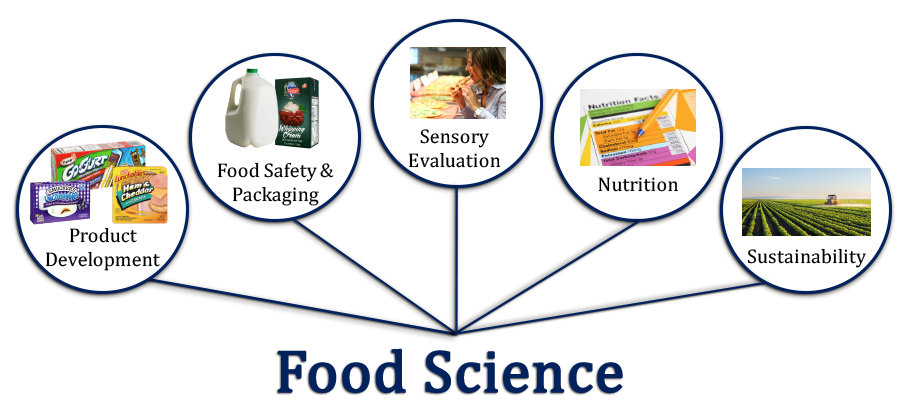Background Agricultural Connections
In this lesson students will learn how science is applied in the production, processing, packing, and distribution of their food. Under the umbrella of food science there are many specialties and career paths that play a part in the process of farm to fork food production.
- Product Development
- Develop new food products to meet the needs of consumers of various life stages, nutritional needs, and desired convenience factors. For example, Uncrustables are a peanut butter and jelly sandwich that does not have a crust. These were designed for the convenience of parents and to appeal to children who don't like to eat the crust.
- Food Safety & Packaging
- Develop and improve methods of food processing to ensure food is safe from food borne illness and can be safely stored for a specified amount of time. For example, pasteurization is a cooking process that kills any harmful bacteria that may be present in milk and juice. Ultra Heat Treatment (UHT) of milk is another cooking process actually makes milk sterile and shelf-stable for a time. Once these processes take place, the milk or milk product is properly packaged in a container to keep the food safe and nutritious for the given shelf life.
- Sensory Evaluation
- Apply chemistry principles to develop food products that taste good with a pleasing appearance and texture. When new food products and formulations are created, they may taste good and even be nutritious, but if they don't have a pleasing appearance and feel in your mouth, they will not be enjoyed or consumed.
- Nutrition
- Apply research, science, and market trends associated with the development of foods to maintain and improve health. Examples include the fortification of foods to eliminate nutrient deficiencies and the formulation of accurate nutrition facts labels.
- Sustainability
- Ensure food production sufficiency throughout the product lifecycle—from sustainable ingredient sourcing, to product development, to waste management. Food scientists help to ensure that we have a food supply that can continue to sustain our population using the natural resources that we have.

